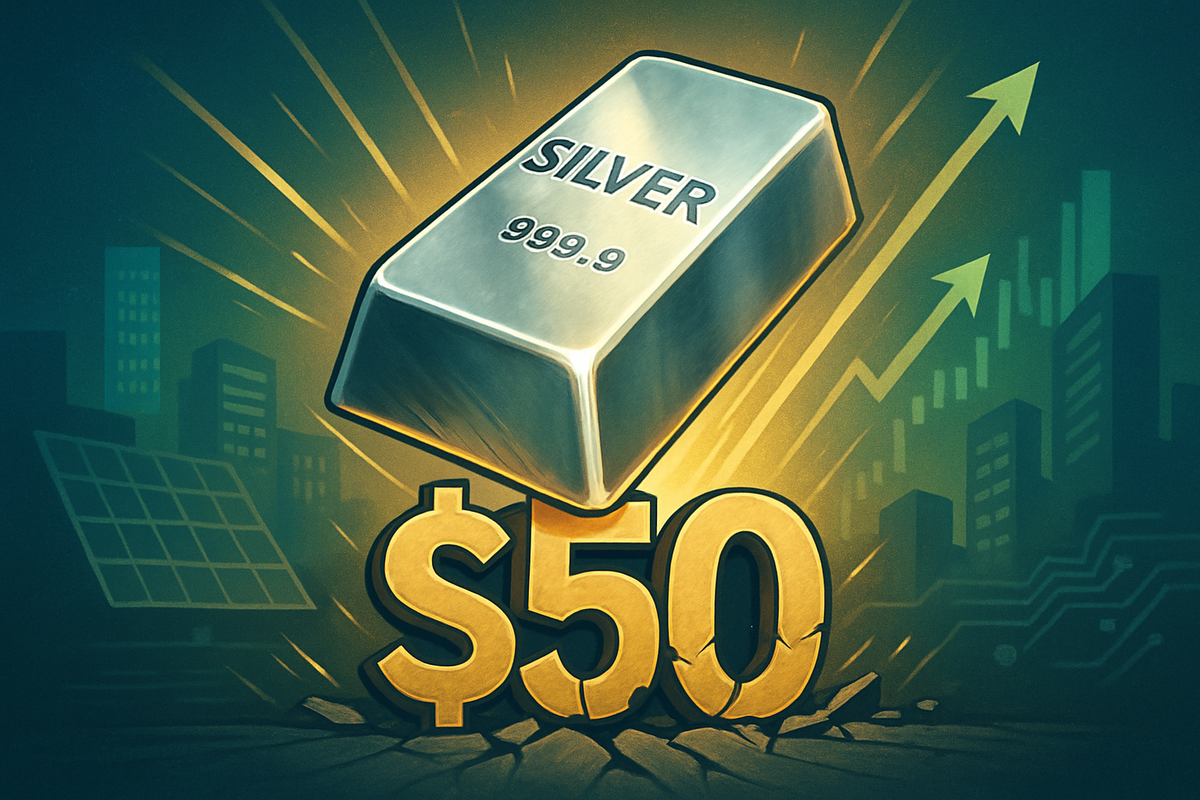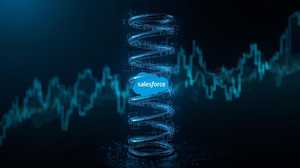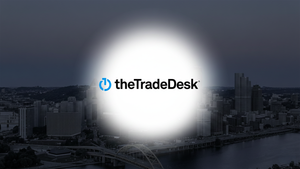
The global silver market is currently witnessing a historic surge, with prices decisively breaking above the crucial $50 per ounce threshold in October 2025. This monumental rally, marking the strongest uptrend since 2011, is fueled by a confluence of persistent supply deficits, robust industrial demand, and escalating macroeconomic uncertainties. The sustained breach of this multi-decade resistance level signals a profound re-evaluation of silver's intrinsic value, positioning it as a standout performer in the commodities landscape and setting the stage for potentially unprecedented price appreciation.
This significant market movement has captured the attention of investors and analysts alike, who are now closely monitoring silver's trajectory. The breakout above $50 is not merely a psychological victory; it represents a fundamental shift in market dynamics, driven by an acute scarcity of physical metal and a growing recognition of silver's dual role as both a safe-haven asset and a critical industrial commodity. The implications for public companies involved in silver mining, industrial applications, and precious metals investment are substantial, promising a period of heightened profitability for some and increased cost pressures for others.
Unpacking the Silver Surge: A Confluence of Factors
Silver's ascent in October 2025 has been nothing short of spectacular, with prices reaching an all-time high of $52.58 per ounce in London markets, surpassing records set in 1980. Intraday highs have touched $53.50, and the metal has comfortably traded around $52.61, representing an astonishing 76% year-to-date gain and a staggering 168% increase from 2022 levels. This powerful rally is underpinned by several key drivers.
Firstly, the market is grappling with persistent supply deficits, with global silver consumption projected to outstrip supply for the fifth consecutive year in 2025. This structural imbalance is exacerbated by tight liquidity in major trading hubs like London and New York, where lease rates for physical silver have surged above 30%, signaling an acute scarcity and contributing to a "short squeeze" scenario. Macroeconomic catalysts, including expectations of Federal Reserve rate cuts, a weakening US dollar, and persistent demand for inflation hedging, are further channeling investment into precious metals.
Beyond its monetary appeal, industrial demand is a major engine for silver's growth. The solar photovoltaic (PV) sector, in particular, is consuming vast quantities, with an estimated 232 million ounces in 2024 alone. Silver's indispensable role in electronics, electric vehicles (EVs), 5G technology, and advanced sensors ensures robust and growing industrial consumption. This dual demand profile, coupled with increasing institutional and retail investor flows into silver ETFs, creates a powerful upward momentum.
Technically, silver is exhibiting strong bullish signals, trading within an ascending channel and consistently forming higher highs and higher lows. The 14-period Relative Strength Index (RSI) remains above the 50 level, reinforcing the bullish momentum, despite recent readings above 70-80 suggesting overbought conditions that could lead to short-term consolidation. A decisive breakout above previous consolidation ranges, particularly the $50 mark, has been confirmed, with analysts identifying potential resistance at $54.53 and the psychological $55.00 level. Support levels are established around $52.15 and $50.25, with a "buy on dips" strategy being recommended by market experts. The significance of the $50 level cannot be overstated; it has acted as a formidable historical resistance, only briefly breached in 1980 and 2011. Its current sustained break is seen as a "crossing the Rubicon moment," attracting widespread media attention and new market participants, thereby reinforcing the price appreciation cycle and signifying a fundamental revaluation of silver's role.
Winners and Losers in the Silver Rush
A sustained rally in silver prices above $50 per ounce will create significant financial implications across various sectors, primarily benefiting silver mining companies and exchange-traded funds (ETFs) directly tied to the commodity, while potentially increasing costs for industries heavily reliant on silver as a raw material.
Leading the charge among the beneficiaries are publicly traded silver mining companies. These firms stand to see substantial increases in their revenues and profit margins as the value of their extracted silver rises. Companies such as Pan American Silver Corp. (NYSE: PAAS, TSX: PAAS), First Majestic Silver Corp. (NYSE: AG, TSX: AG), MAG Silver Corp. (NYSEAMERICAN: MAG, TSX: MAG), Endeavour Silver Corp. (NYSE: EXK, TSX: EDR), Vizsla Silver Corp. (NYSEAMERICAN: VZLA, TSX: VZLA), Hecla Mining Company (NYSE: HL), and Fortuna Silver Mines Inc. (NYSE: FSM) are directly exposed to silver price movements and are poised for enhanced financial performance. Even streaming companies like Wheaton Precious Metals Corp. (NYSE: WPM), which purchase silver from miners at fixed prices, could see their assets appreciate in value, although their direct operational leverage to price increases might differ from pure miners. Australian miner Broken Hill Mines Ltd (ASX: BHM) has also been noted for significant share surges on the back of exceptional silver results.
Silver-backed Exchange Traded Funds (ETFs) also represent direct beneficiaries, as their value is intrinsically linked to the price of physical silver bullion. Prominent examples include the iShares Silver Trust (NYSEARCA: SLV), ETFS Physical Silver Shares Trust ETF (NYSEARCA: SIVR), and Sprott Physical Silver Trust ETV (NYSEARCA: PSLV). These investment vehicles offer investors a straightforward way to gain exposure to silver's rally. In India, numerous silver ETFs such as ICICI Prudential Silver ETF (NSE: SILVERIETF) and HDFC Silver ETF (NSE: HDFCSILVER) are also experiencing heightened interest, despite some localized issues with premium compression and shortages of LBMA-certified bars.
Conversely, industries that rely heavily on silver as an industrial input may face increased operational costs. The solar energy sector, for instance, where silver is a critical component in photovoltaic cells, could see higher manufacturing expenses for companies producing solar panels. Similarly, electric vehicle (EV) manufacturers, who use silver in various electrical components, sensors, and battery systems, may experience rising raw material costs. The broader electronics industry, encompassing everything from semiconductors to mobile devices and 5G infrastructure, will also feel the pinch of elevated silver prices. These companies will need to assess their ability to absorb these increased costs, pass them on to consumers, or explore alternative, potentially less efficient, materials to maintain profitability.
Wider Implications and Historical Context
The sustained rally in silver prices above $50 per ounce carries wider significance, extending beyond immediate financial gains for miners and investors. This event underscores several broader industry trends, potential ripple effects, and draws parallels with historical precedents, all while hinting at future regulatory and policy considerations.
Firstly, the rally strongly reaffirms silver's dual identity. It is not only a traditional monetary hedge, sought after during periods of economic uncertainty, geopolitical tensions, and inflationary pressures, but also an indispensable industrial metal. Its critical role in the green energy transition, particularly in solar photovoltaic cells, electric vehicles, and 5G technology, positions it at the forefront of global technological and environmental shifts. This dual demand profile provides a robust foundation for its current and future price appreciation, distinguishing it from other commodities.
The ripple effects of this surge could be significant. While miners rejoice, industrial users face escalating input costs. This pressure might accelerate research and development into silver-saving technologies or alternative materials, potentially leading to substitution efforts if prices remain prohibitively high. However, given silver's unique properties, especially its superior electrical and thermal conductivity, finding viable substitutes for many applications remains challenging, limiting the immediate impact of such efforts. On the regulatory and policy front, while direct regulatory intervention in silver markets is less common than for, say, energy markets, the macroeconomic catalysts driving the rally—such as anticipated Federal Reserve rate cuts and their impact on the US dollar—highlight the profound influence of monetary policy on precious metal valuations.
Historically, silver has only briefly touched or surpassed the $50 mark twice in modern history: in January 1980 during the infamous Hunt Brothers' attempt to corner the market, and again in April 2011. The current sustained breach is therefore a monumental event, breaking through multi-decade resistance and suggesting a more fundamental and sustainable revaluation of the metal. Unlike the speculative fervor of 1980 or the post-financial crisis liquidity surge of 2011, the current rally appears to be underpinned by genuine supply deficits and structural industrial demand, lending it greater credibility. This historical context also reminds us of silver's inherent volatility, which historically sees it move two to three times faster than gold, a characteristic investors must always consider.
What Comes Next for the Silver Market?
Looking ahead, the silver market is poised for continued dynamism, with both short-term fluctuations and long-term upward trajectories anticipated. The current rally above $50 per ounce marks a significant turning point, but investors and industrial stakeholders must prepare for potential strategic pivots and emerging market opportunities and challenges.
In the short term, while the bullish momentum is undeniable, the overbought conditions indicated by the Relative Strength Index (RSI) on daily and weekly charts (above 70 and 80 respectively) suggest that a period of consolidation or a slight pullback could occur. Such corrective moves towards established support levels, particularly around $52.15 or the psychological $50.25 mark, are likely to be viewed as strategic buying opportunities by those looking to enter or increase their exposure to the market. Market participants should watch for these dips, as they could offer more attractive entry points before the rally resumes its upward march.
For the long term, the outlook remains overwhelmingly positive. Analysts are projecting continued upside, with some forecasts suggesting prices could reach $78 per ounce by late 2026 and even potentially $100 in the near future. Bank of America, for instance, has raised its 12-month target to $65/oz, labeling silver as "the tightest major metal market of 2025." These ambitious targets are supported by the persistent physical shortages, which are particularly impacting major consumers like India, and the inherent difficulty in rapidly increasing silver production due to its nature as a byproduct of other mining operations. The ongoing green energy transition and technological advancements will continue to underpin robust industrial demand, ensuring a strong fundamental floor for prices.
Potential strategic pivots for companies include accelerated investment in exploration and mining technologies by silver producers to capitalize on higher prices, while industrial users may intensify efforts to optimize silver usage or explore long-term supply contracts to mitigate price volatility. Market opportunities will emerge for innovators in silver recycling and for companies offering hedging solutions. Challenges will include managing the inherent volatility of silver, potential profit-taking at key psychological resistance levels, and the risk of demand destruction from industrial users if prices become unsustainable. Overall, the dominant scenario points towards a sustained bull market for silver, albeit with periods of increased volatility.
A New Era for the White Metal
The silver market's decisive break above $50 per ounce in October 2025 marks the dawn of a new era for the "white metal." This historic rally is not a fleeting phenomenon but rather a robust movement underpinned by fundamental supply-demand imbalances, critical industrial applications, and its enduring role as a monetary hedge against global economic uncertainties. The confluence of persistent supply deficits, soaring industrial demand from green technologies, and macroeconomic tailwinds has created a powerful bullish momentum that is reshaping market perceptions and investor strategies.
Moving forward, the market is expected to remain highly dynamic. While short-term consolidations or pullbacks are possible due to overbought technical indicators, these are likely to be viewed as temporary pauses within a broader uptrend. Investors should meticulously monitor key support levels and market sentiment, leveraging any dips as potential buying opportunities. The long-term outlook remains exceptionally strong, with ambitious price targets being set by leading financial institutions, driven by silver's indispensable role in the global energy transition and its growing appeal as a safe-haven asset.
The lasting impact of this rally will likely be a fundamental revaluation of silver, cementing its status as a critical commodity for the 21st century. It will spur increased investment in silver mining and exploration, while simultaneously challenging industrial users to innovate and adapt to higher input costs. For investors, the coming months will be crucial for observing how the market digests these elevated prices, how industrial demand evolves, and how global macroeconomic policies continue to influence precious metals. The $50 mark is no longer resistance; it is the new foundation for silver's journey towards potentially unprecedented heights.
This content is intended for informational purposes only and is not financial advice





